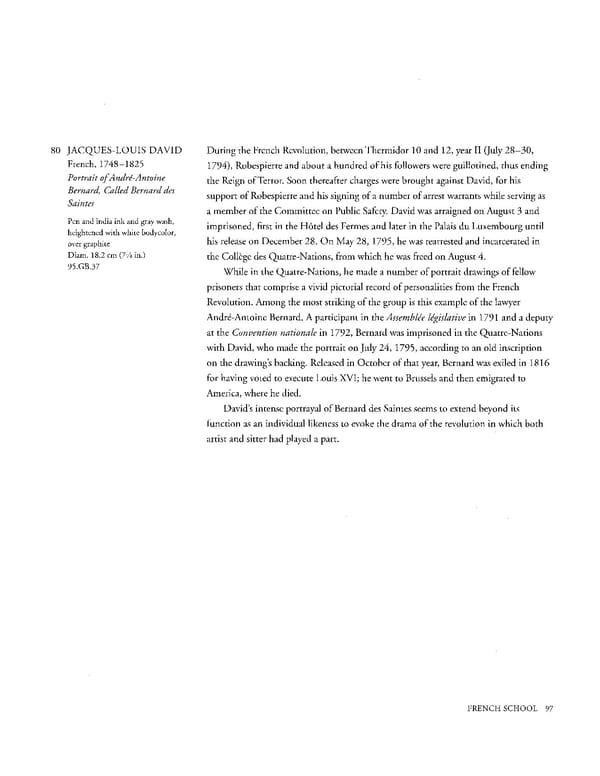80 JACQUESLOUIS DAVID During the French Revolution, between Thermidor 10 and 12, year II (July 2830, French, 17481825 1794), Robespierre and about a hundred of his followers were guillotined, thus ending Portrait of AndreAntoine the Reign of Terror. Soon thereafter charges were brought against David, for his Bernard, Called Bernard des support of Robespierre and his signing of a number of arrest warrants while serving as Saintes a member of the Committee on Public Safety. David was arraigned on August 3 and Pen and india ink and gray wash, imprisoned, first in the Hotel des Fermes and later in the Palais du Luxembourg until heightened with white bodycolor, over graphite his release on December 28. On May 28, 1795, he was rearrested and incarcerated in Diam. 18.2 cm (7 in.) the College des QuatreNations, from which he was freed on August 4. 95.GB.37 While in the QuatreNations, he made a number of portrait drawings of fellow prisoners that comprise a vivid pictorial record of personalities from the French Revolution. Among the most striking of the group is this example of the lawyer AndreAntoine Bernard. A participant in the Assemblee legislative in 1791 and a deputy at the Convention nationale in 1792, Bernard was imprisoned in the QuatreNations with David, who made the portrait on July 24, 1795, according to an old inscription on the drawing's backing. Released in October of that year, Bernard was exiled in 1816 for having voted to execute Louis XVI; he went to Brussels and then emigrated to America, where he died. David's intense portrayal of Bernard des Saintes seems to extend beyond its function as an individual likeness to evoke the drama of the revolution in which both artist and sitter had played a part. FRENCH SCHOOL 97
 Masterpieces of the Getty Museum: Drawings Page 97 Page 99
Masterpieces of the Getty Museum: Drawings Page 97 Page 99